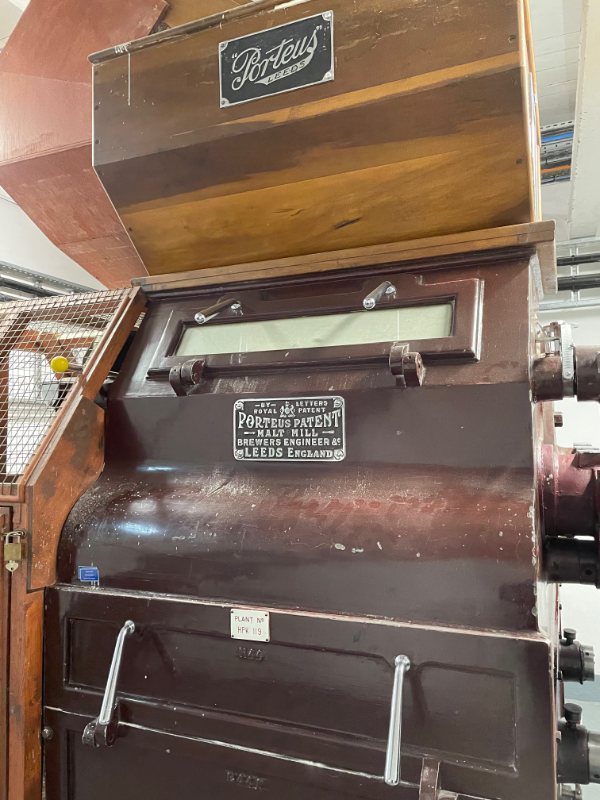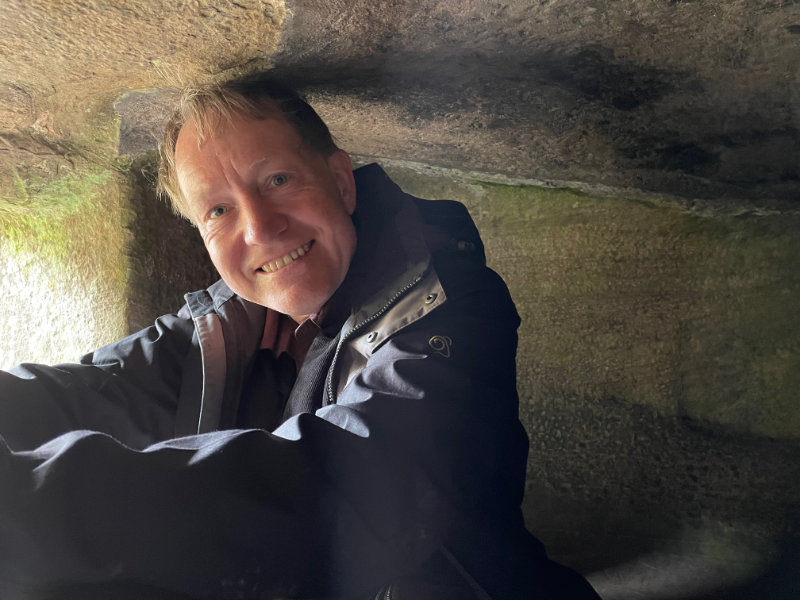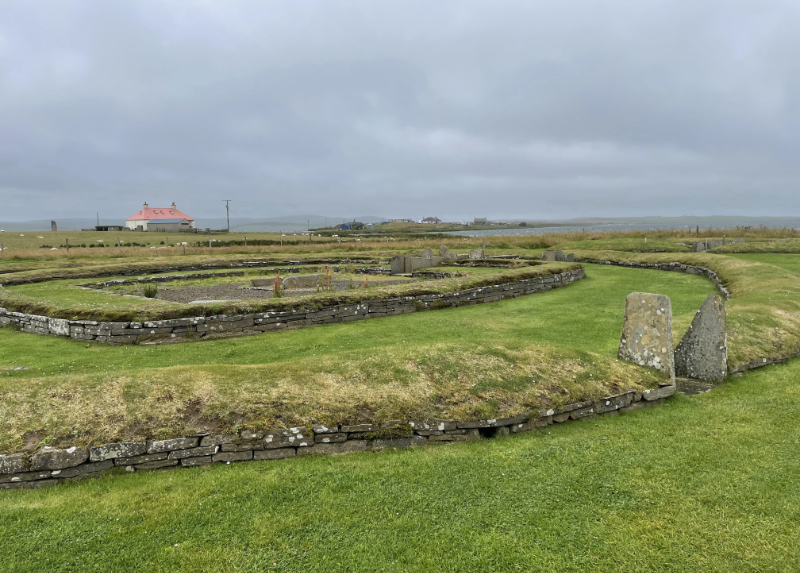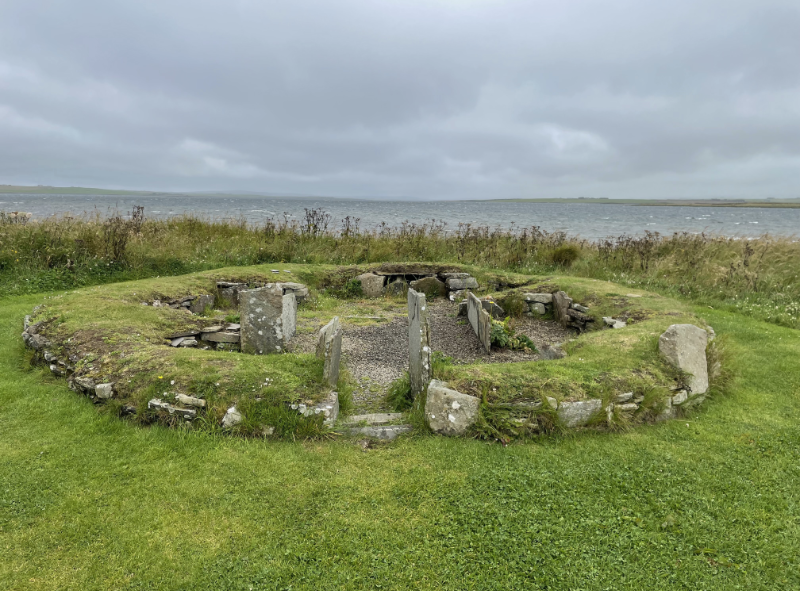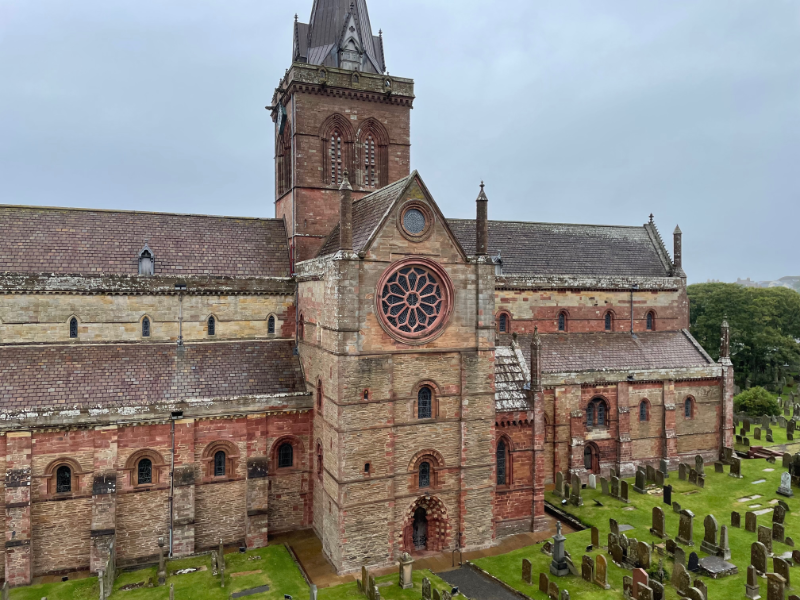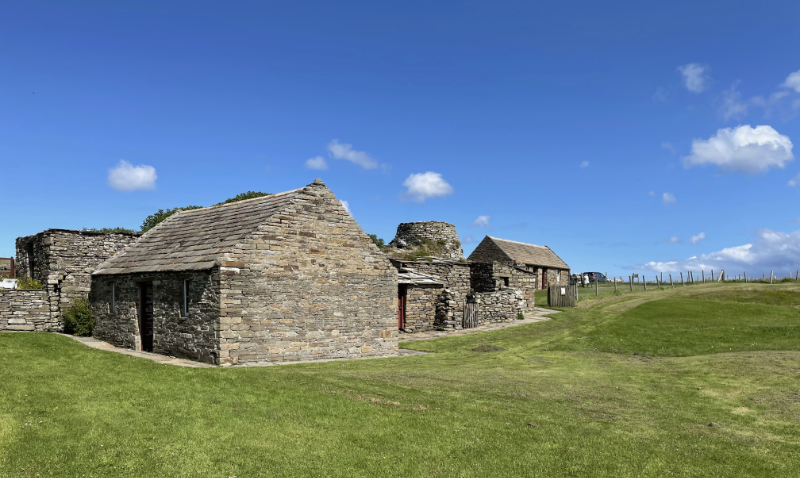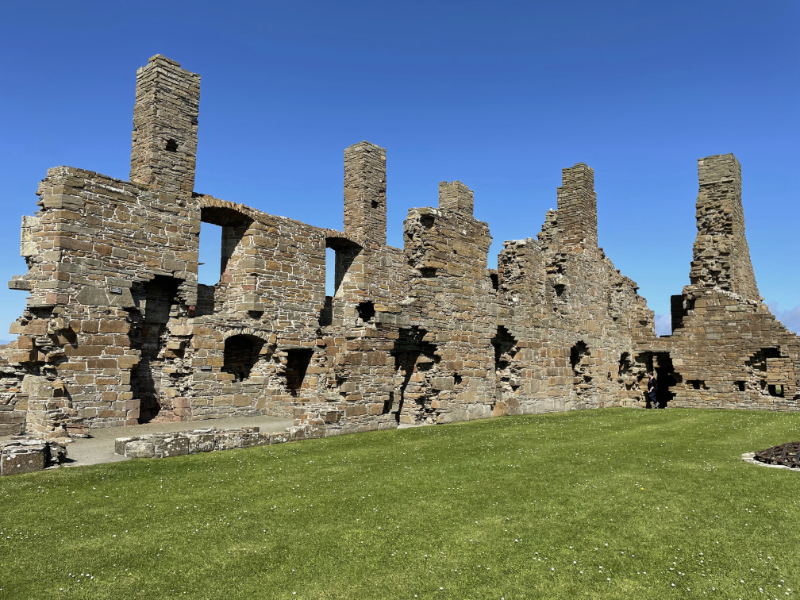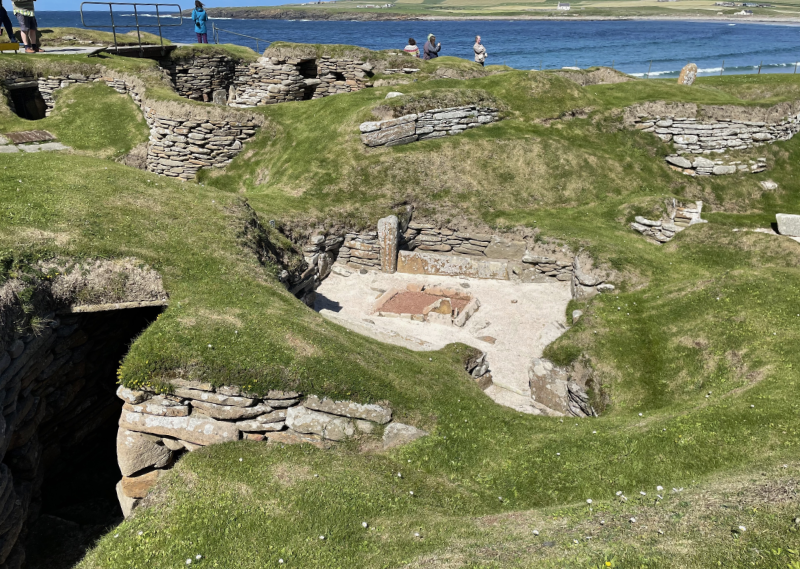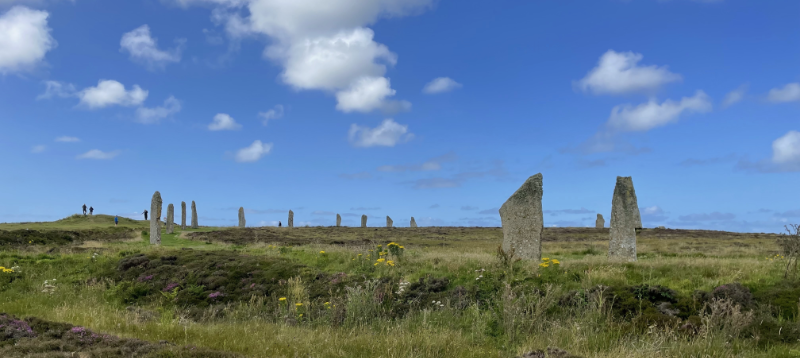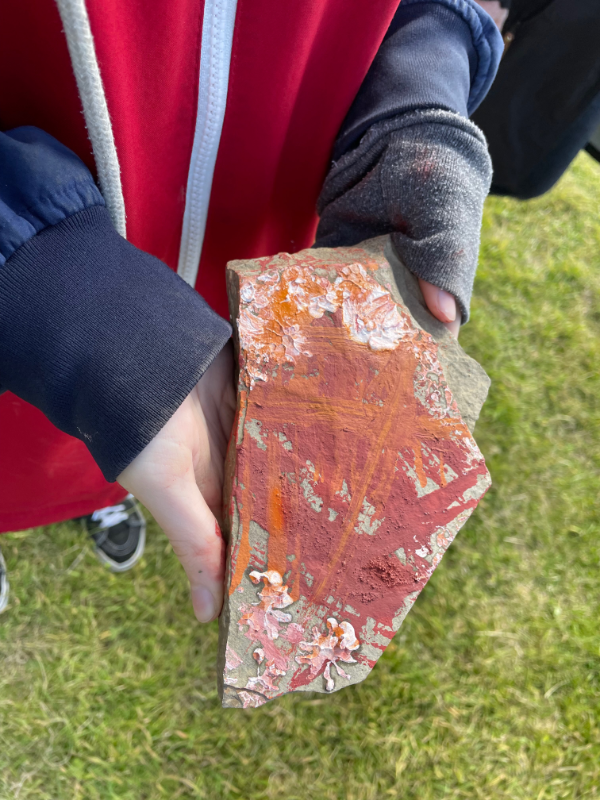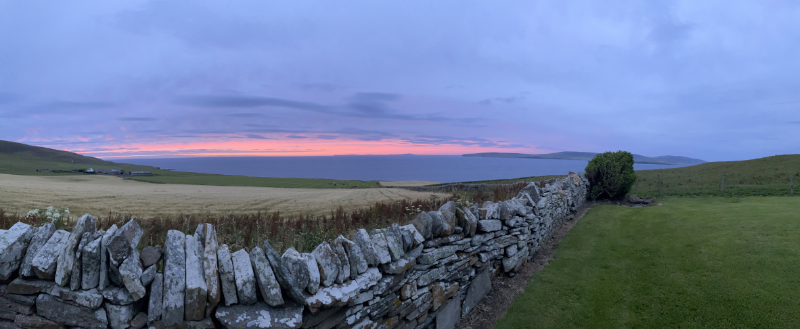The Grain Earth House
Dec. 28th, 2022 11:45 amThe Grain Earth House is a souterrain (i.e., a somewhat unexplained hole in the ground possibly used to store food in order to keep it cool) on the outskirts of Kirkwall. When we first tried to visit it we found it to be on a corner in a rather unprepossessing industrial estate with a locked gate and sign that said the key could be got from Judith's Glue Shop in Kirkwall. Since we had just come from Kirkwall and had no real desire to attempt for the second time in one day to find parking spaces in the centre of town we elected to try again another day.
On our final day in Orkney we lunched in Kirkwall and so took the opportunity to visit the Glue Shop (it appeared to be a cross between a craft shop, a souvenir shop and a cafe opposite the cathedral) and sign out the key. Once we had the key there was a torch in a box by the entrance so we could admire the interior.
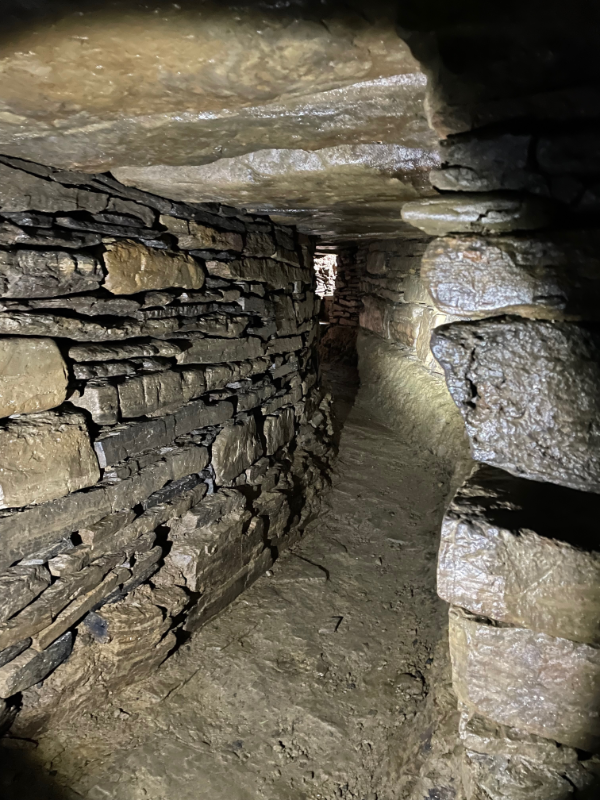
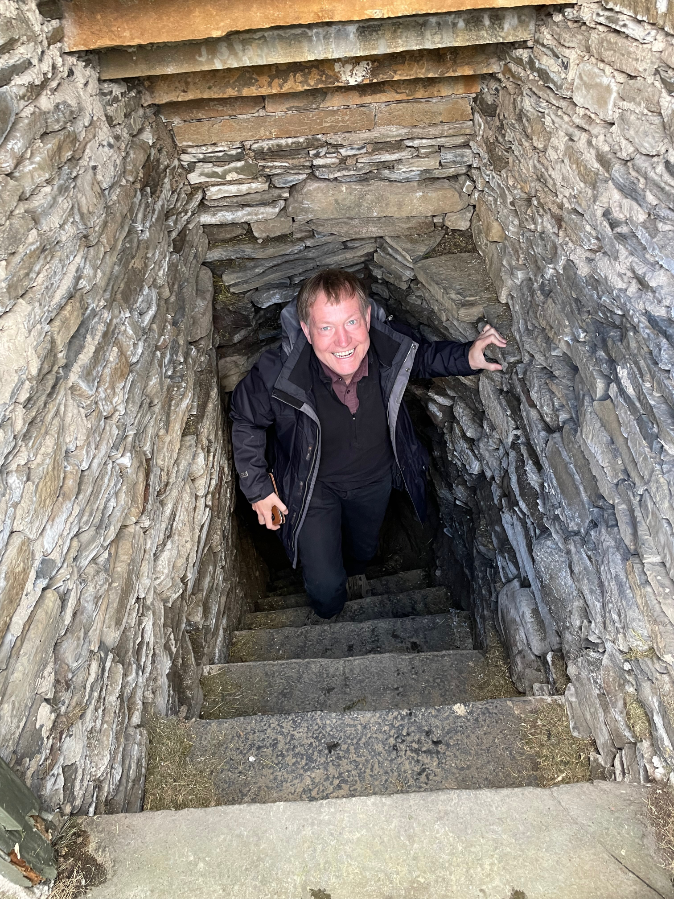
On our final day in Orkney we lunched in Kirkwall and so took the opportunity to visit the Glue Shop (it appeared to be a cross between a craft shop, a souvenir shop and a cafe opposite the cathedral) and sign out the key. Once we had the key there was a torch in a box by the entrance so we could admire the interior.


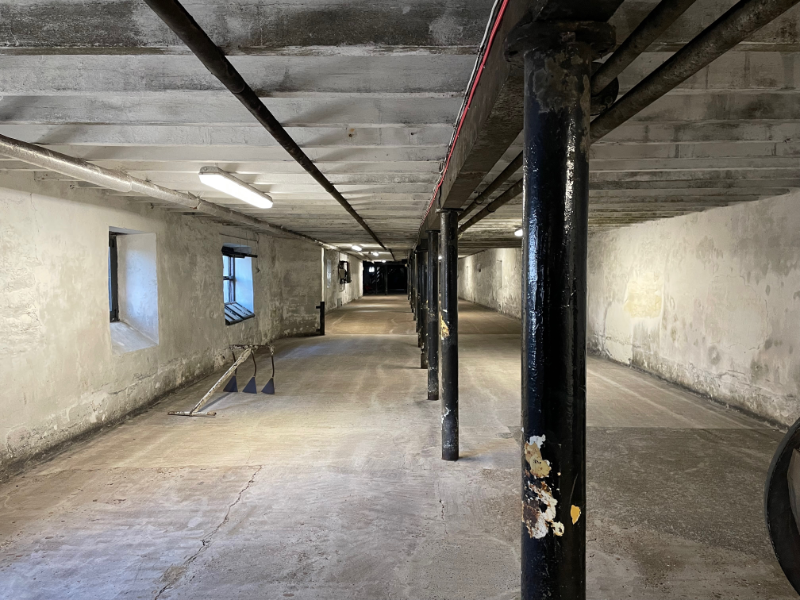
 .
. 